La Romareda – until 2025
| Capacity | 33 608 |
|---|---|
| Country | Spain |
| City | Zaragoza |
| Clubs | Real Zaragoza |
| Retire year | 2025 |
| Inauguration | 08/09/1957 |
| Opening game | Zaragoza – Osasuna 4–3 |
| Construction | 1956–1957 |
| Cost | ESP 21,5 Million |
| Design | Francisco Riestra |
| Contractor | Agroman |
| Address | C/. Eduardo Ibarra 6, 50009 Zaragoza |
Advertisement
La Romareda – historical stadium description
What is the former La Romareda stadium like in a nutshell?
The former La Romareda stadium was built between 1956 and 1957, replacing Real Zaragoza's previous stadium, Campo de Torrero. The stadium was built south of the center of Zaragoza, about 3 km from Plaza del Pilar.
Initially, the stands behind the goals were lower than those along the pitch, and only the main stand was equipped with a roof (covering only the upper part of the stands).
The stands behind the goals were expanded in the 1976/77 season, when they were raised to the same height as the others and also received a canopy. The last, eastern stand was covered before the 1982 World Cup. In the 1990s, standing room was eliminated.
In its final form, the facility could accommodate over 33,000 spectators. The stands behind the goals were slightly curved; the upper parts of the stands were covered, and floodlight masts stood behind the corners. The facility was known for its non-standard goal nets, which were significantly extended to the rear.
The stadium was primarily used by Real Zaragoza. It also hosted matches during the 1982 World Cup, the 1992 Olympic Games, the King's Cup finals, and five matches of the Spanish national team. In 1982, Pope John Paul II visited the stadium.
Before the 2030 World Cup, a project was launched to build a new stadium on the site of La Romareda. In the summer of 2024, the south stand of the old stadium was demolished, and after the 2024/25 season, the dismantling of the remaining stands began to make way for the new facility, which is to be ready in mid-2027.
How was La Romareda created?
The first organized football matches in Aragon date back to 1915, much later than in neighboring Catalonia, for example. In 1917, the Iberia SC club was founded in the regional capital, Zaragoza, which dominated the region in the following years.
On October 7, 1923, the club inaugurated its own football stadium, the first facility of its kind in the city, known as Campo de Torrero. In 1932, Iberia SC merged with CD Real Zaragoza to form FC Zaragoza (known as Real Zaragoza since 1951).
In the 1950s, Campo de Torrero, although expanded to a capacity of 20,000 spectators, was already too small for the club, and officials began to make efforts to build a new facility.
A new site was found about 3 km west of the existing stadium. Construction began in 1956. The new arena was designed by Francisco Riestra, and the main contractor was Agroman. The cost of construction was 21.5 million pesetas.
The new facility was opened on September 8, 1957, and the hosts defeated Osasuna 4–3 in the inaugural match. The old stadium continued to serve as a training facility for some time, and was later sold to developers. Its last elements were demolished in the early 1990s.
What did La Romareda look like initially?
The pitch of the new stadium was surrounded by stands on all sides; those behind the goals were slightly curved, while the rows of stands along the pitch ran parallel to the sidelines. The stands along the pitch were significantly higher, and the upper rows of the main west stand were covered by a roof. Initially, the stadium could seat over 32,000 spectators.
How was La Romareda modernized?
In the 1976/77 season, the stands behind the goals were expanded and leveled with those along the pitch. In addition, they were equipped with a roof which, as in the case of the main stand, covered only the upper rows.
Another thorough modernization of the facility took place before the 1982 World Cup. As part of the work, the auditorium was renovated and a roof was built over the upper part of the east stand (the last one that did not yet have a roof). After these modernizations, the capacity of the facility was set at 46,920 spectators.
The stadium underwent another renovation before the 1992 Olympic Games, when the number of seats was increased. In 1998, all standing places in the stadium were eliminated, and the last missing seats were installed. The capacity was thus reduced to 34,596 spectators.
In the 21st century, the stadium underwent only minor renovations, including the renovation of the boxes, changing rooms, and other rooms inside the stands in 2006.
What events has La Romareda hosted?
In 1982, the stadium hosted three matches of the first group stage of the World Cup. In 1992, the venue hosted six group stage matches and one quarter-final as part of the football tournament at the Summer Olympics in Barcelona.
The stadium also hosted the finals of the King's Cup in 1983, 1987, and 1996, as well as its female counterpart (the Queen's Cup) in 2009 and 2024. The Spanish national team also played five matches there.
In addition to football matches, the stadium also hosted other events, such as concerts (Michael Jackson, Gloria Estefan and Tina Turner, among others, performed at La Romareda). On November 6, 1982, the stadium hosted Pope John Paul II during the National Gathering of the Sick, organized during his pilgrimage to Spain.
How did Real Zaragoza perform at the old La Romareda?
For most of its time at the old La Romareda, Real Zaragoza played in the top flight – until 2013, relegation to Segunda División was only a brief interlude. The situation changed in the 2013/14 season, when the club settled permanently in the second division and failed to return to the elite before the old stadium was closed.
During this period, the club's greatest successes include the 1974 national vice-championship, six triumphs in the King's Cup (1964, 1966, 1986, 1994, 2001, 2004) and the Spanish Super Cup (2004). Internationally, Real won the Inter-Cities Fairs Cup (1964) and the Cup Winners' Cup (1995).
In 1995, Real also took part in the European Super Cup doubleheader. In the first match, played at La Romareda, they drew 1–1 with AFC Ajax (but lost 0–4 in the rematch at the Olympic Stadium in Amsterdam).
What did the old La Romareda look like?
At the end of its existence (except for the last season, when the south stand was demolished), the stadium could seat over 33,000 spectators. The biggest changes that the facility underwent during its history were the expansion of the stands behind the goals, the addition of a roof over the upper rows of all stands, and the installation of plastic seats.
An administrative building was also built behind the main stand, and the stadium was equipped with floodlights and electronic scoreboards. The facility was known for its non-standard goal nets, which did not have the commonly used rectangular shape and were significantly elongated towards the back.
The stadium was located about 3 km south of Plaza del Pilar. Right next to it was, among other things, a hospital complex and the Auditorio de Zaragoza concert and congress hall.
When was the old La Romareda demolished?
The first plans for a new stadium for Real Zaragoza began to emerge at the turn of the 20th and 21st centuries, but various political negotiations and the financial crisis thwarted new projects. The breakthrough came only in connection with the preparations for the 2030 World Cup.
A design for a completely new stadium was created to replace La Romareda, and the old facility was scheduled for demolition.
Work began in July 2024, but until the summer of 2025, it was limited in scope, involving the demolition of the south stand and the buildings adjacent to the stadium. Despite this, the stadium remained open throughout the 2024/25 season, and matches were played with the three remaining stands.
It was only after the 2024/25 season that Real Zaragoza moved to a temporary stadium. The builders were given complete freedom of action and the green light to demolish the three remaining stands. The new stadium is scheduled to be ready in June 2027.
The design of the new La Romareda and a report on its construction can be seen on separate subpages
Advertisement
Pictures
2019
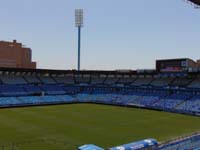
03.06.2019 © Campeones 2008 (CC BY-SA 4.0)
2016
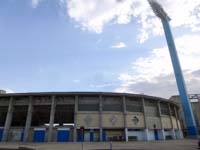
08.09.2016 © Zarateman 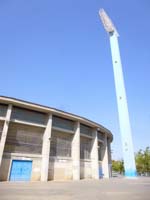
08.09.2016 © Zarateman 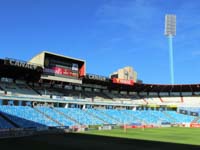
20.06.2016 © Campeones 2008 (CC BY-SA 4.0) 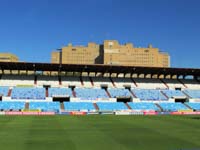
20.06.2016 © Campeones 2008 (CC BY-SA 4.0)
2011
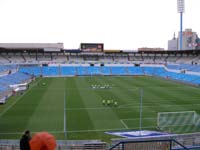
2011 © Migueltrzn (CC BY-SA 3.0)
2005
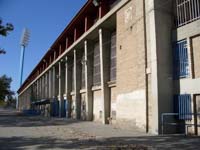
14.11.2005 © Martin Belam (CC BY-SA 2.0)
Related news
2025
-
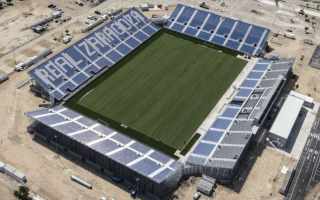
Spain: Beautiful, but shaky. Fans react to Real Zaragoza’s temporary stadium
Estadio Ibercaja has officially opened. While fans praise the comfort of the new venue, there has also been criticism — mainly concerning safety issues. On top of that, the debut match was played on a damaged pitch, made even worse… by rabbits.
-
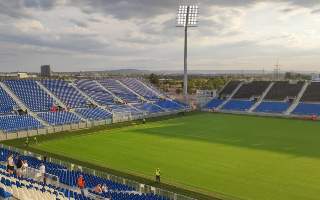
Spain: Record-fast build in Zaragoza and a unique opening
Real Zaragoza will inaugurate its new temporary stadium with free guided tours for residents and fans. The initiative will resemble the farewell event for the Gol Sur stand – all residents will be able to visit Ibercaja Estadio, built in record time and with a capacity of 20,000 spectators.
-
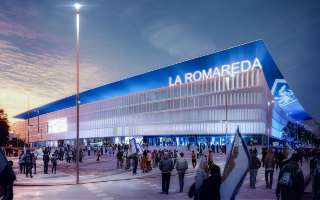
Spain: Ibercaja Bank will put name both Romaredas
The Aragonese bank has won the race to name Real Zaragoza's two stadiums: both the New Romareda and the Mini Romareda, the modular stadium and provisional home of the 'Blanquillo' team. Meanwhile, the demolition of the old stadium is entering a key phase.
-
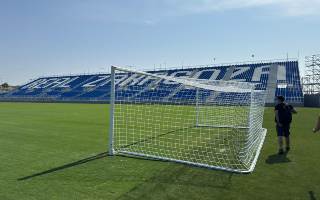
Spain: Zaragoza built Mini Romareda in just four months
Is it possible to build a fully functional football stadium in just a few months? Zaragoza has just proven that it is. The new modular venue with a capacity of 20,000 seats was completed in record time.
-
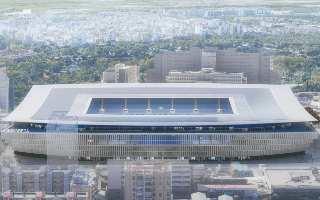
Spain: New Romareda, new source of revenue
Fans have already bid farewell to the 'old' Romareda, and Real Zaragoza are already starting the move to a temporary stadium. Over the next two years, the historic venue will be razed to the ground and built from scratch, but the authorities are already looking for a title sponsor for the new Romareda to boost revenues.
-
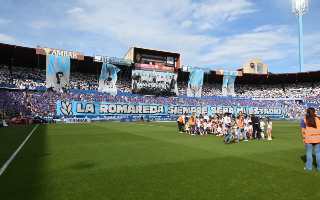
Spain: Farewell to La Romareda – the stadium will soon be history
As the season came to a close, fans bid farewell to La Romareda. Supporters filled the stands of the stadium, which for nearly 68 years had witnessed moments of great glory as well as painful defeats.
-
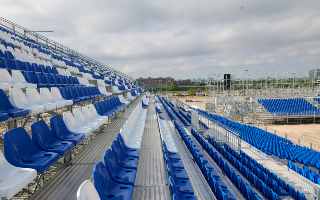
Spain: Zaragoza’s temporary stadium nearing completion after 5 months
The construction of Mini Romareda, Real Zaragoza’s temporary stadium, is almost complete. Located in the Parking Norte area of the Actur district, the venue will host the club's matches for the next two seasons while the historic La Romareda undergoes full reconstruction. The new stadium broke ground just five months ago and is expected to be finished by early June.
-
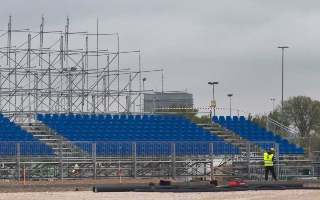
Spain: First seats installed at Mini Romareda!
Although construction began less than two months ago, the modular stadium in Zaragoza is already starting to look like a proper football ground. The grandstand structures are complete, seats are being installed, and the first outlines of the future pitch have been marked.
-
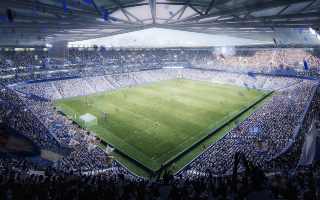
Spain: The second phase of Nueva Romareda construction is about to begin, new tenders launched
The Board of Directors of La Nueva Romareda SL has approved the next stage of construction for the new stadium, as well as the services and supplies for the temporary venue at Parking Norte de la Expo, where work is already in progress.
-
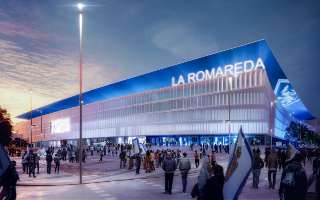
Spain: Second phase of Nueva Romareda construction approved
The second phase of works at the La Romareda stadium has received all the necessary permits. The construction is set to begin in February, starting with the building of the structure for the new Gol Sur stand.
-
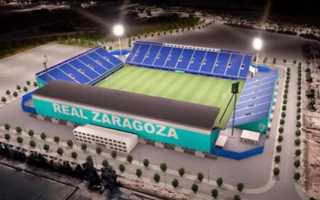
Spain: Work begins on temporary stadium for Real Zaragoza
The urbanisation work to build a portable stadium for Real Zaragoza is fast approaching. The first activities on the construction site are scheduled for this coming Monday, 20 January.
2024
-
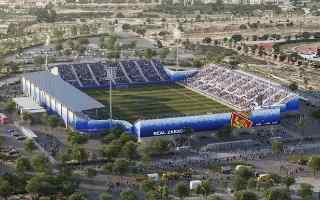
Spain: Modular stadium construction in Zaragoza will begin in early January
Two parking lots, a fan zone, picnic areas, and flood protection—this is how the surroundings of the temporary football stadium at Parking Nord will look, where Real Zaragoza will play for the next two seasons.
-
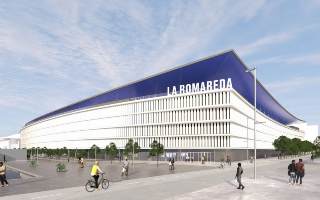
Spain: Construction of Nueva Romareda will take three months less than expected
IDOM, the company responsible for the design, is revealing more and more details about the future stadium in Zaragoza.
-
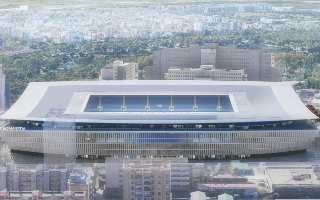
Spain: Construction of Nueva Romareda turns out more expensive than expected
The construction of the Nueva Romareda stadium is set to cost more than initially projected, with an additional €72 million needed from two of the three partners of the La Nueva Romareda SL group to keep the project on track.
-
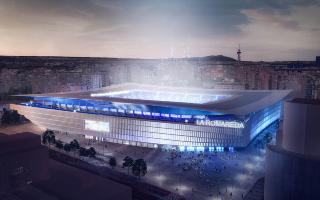
Spain: Four companies interested in construction of Nueva Romareda
Four companies are competing for the continuation of the demolition works of La Romareda and the construction of the new stadium. The board of directors of La Nueva Romareda has approved the proposal for the contracting table. We also know the final deadline for submitting bids for the tender.
-
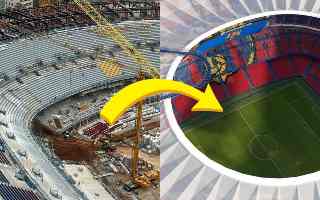
Spain: Wave of stadium upgrades sweeps through the Iberian Peninsula
In recent years, work on Spanish stadiums has not stopped, and the 2030 World Cup has provided another important impetus for the renovation of facilities. With work on the Bernabéu, Camp Nou and Balaídos already underway, 9 La Liga venues are awaiting their turn. Rosaleda, Romareda, Riazor and La Cartuja join the group as 2030 World Cup hosts.
-
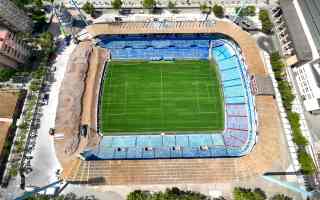
Spain: La Romareda to disappear by mid-October 2025
October 2025. That’s the time when all Zaragoza fans will say goodbye forever to their beloved La Romareda and welcome their new stadium. The company responsible for demolition and construction must ensure that no trace of the current football stadium remains no later than one year after it closes.
-
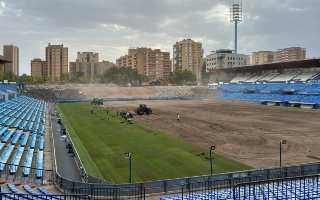
Spain: Tender announced for next phase of Nueva Romareda construction
Nueva Romareda has announced a tender for €138.5 million for a major phase involving the demolition of the current facility and the construction of a new stadium. The public tender will determine the works for Phase 1B.
-
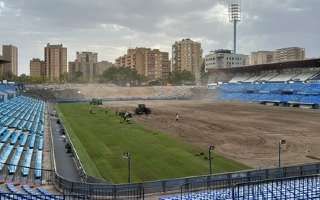
Spain: Two companies interested in building temporary stadium for Real Zaragoza
On September 12, the deadline for submitting bids for the construction of a temporary football pitch for Real Zaragoza at the North Parking lot expired. This temporary facility will be used during the work on La Romareda.
-
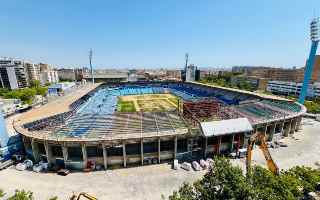
Spain: Demolition work underway at La Romareda. Temporary stadium to be built
On July 7, the day after Enrique Bunbury's concert, demolition work began at La Romareda. The completion of this project is scheduled for the end of 2027 or the beginning of 2028. In the upcoming season, Real Zaragoza will continue to play at the venue, with Gol Sur being the first section to be demolished.

 StadiumDB
StadiumDB